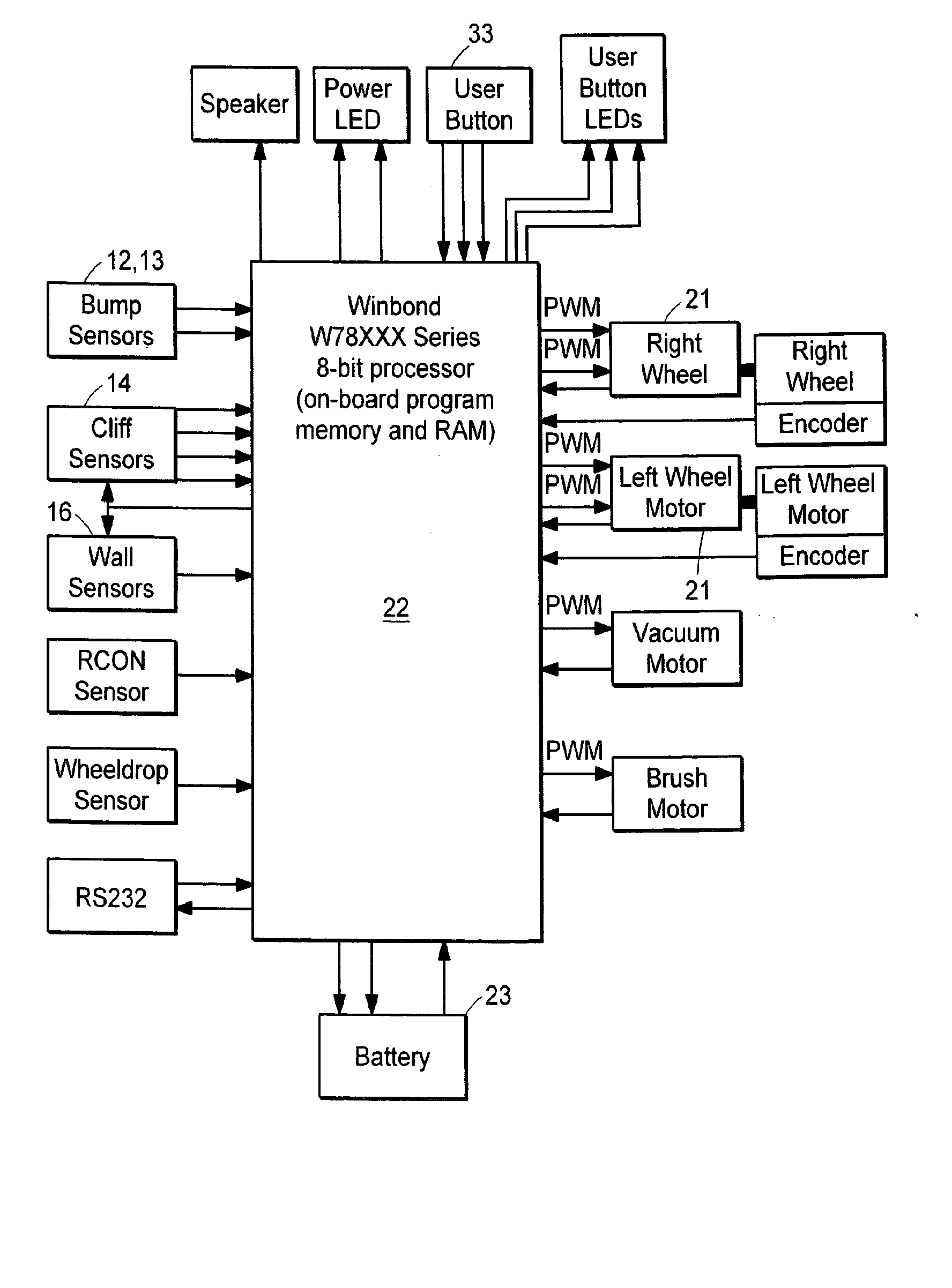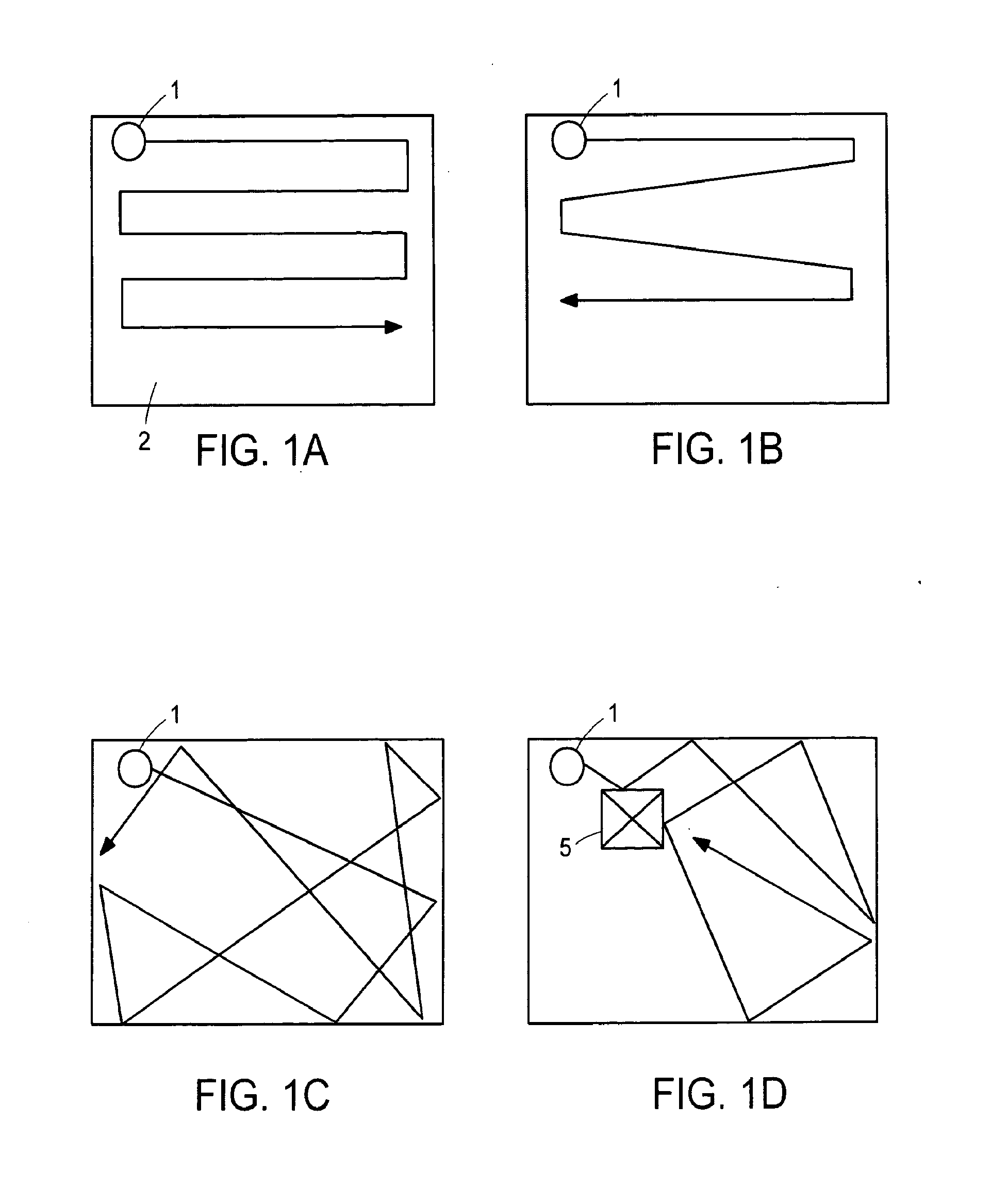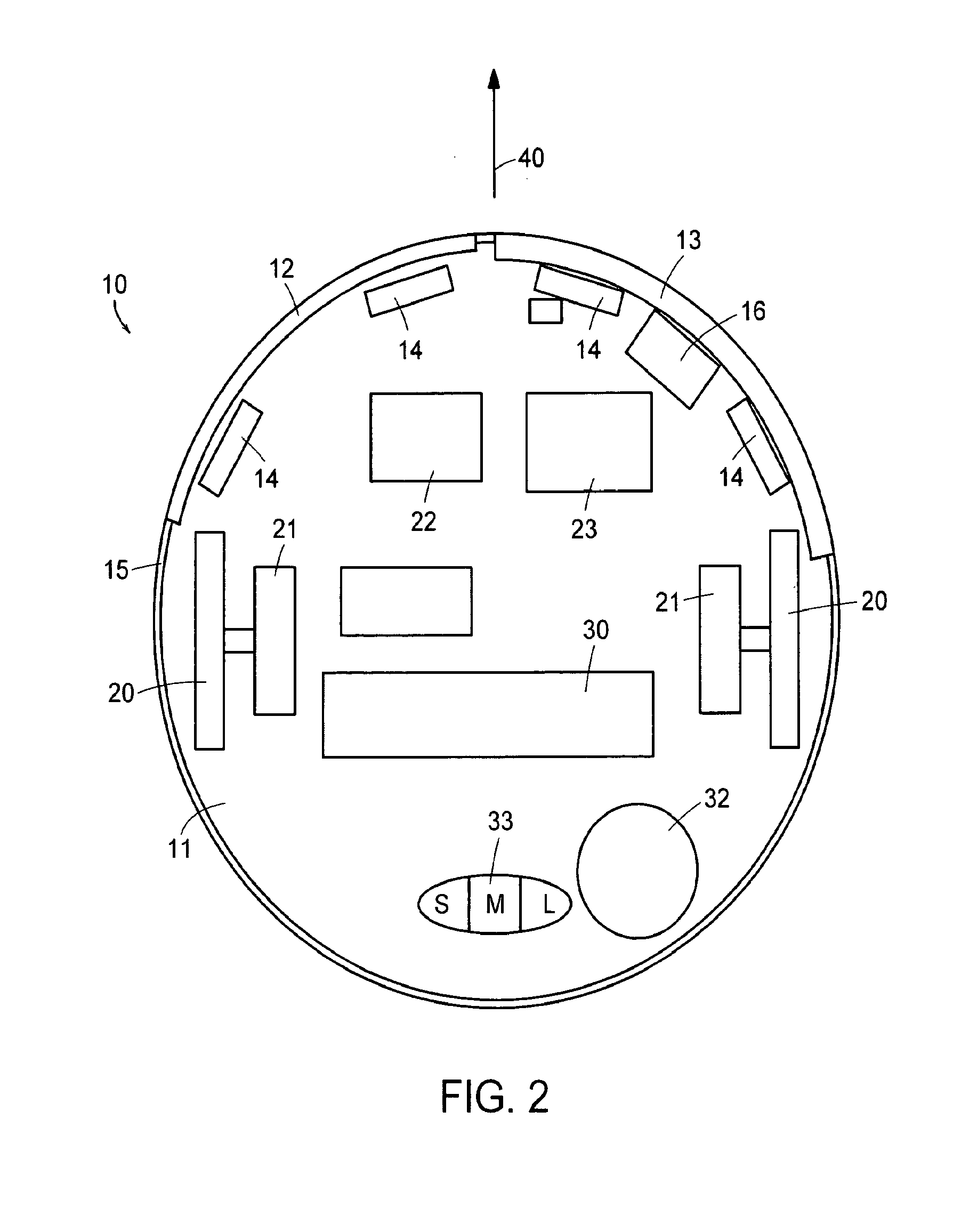Method and System for Multi-Mode Coverage for an Autonomous Robot
a robot and multi-mode technology, applied in the direction of process and machine control, carpet cleaning, instruments, etc., can solve the problems of inability to vary the control, the robot may become trapped, and the proportion of the area uncovered, so as to optimize the distance the robot travels and effectively covers the area
- Summary
- Abstract
- Description
- Claims
- Application Information
AI Technical Summary
Benefits of technology
Problems solved by technology
Method used
Image
Examples
Embodiment Construction
[0043] In the present invention, a mobile robot is designed to provide maximum coverage at an effective coverage rate in a room of unknown geometry. In addition, the perceived effectiveness of the robot is enhanced by the inclusion of patterned or deliberate motion. In addition, in a preferred embodiment, effective coverage requires a control system able to prevent the robot from becoming immobilized in an unknown environment.
[0044] While the physical structures of mobile robots are known in the art, the components of a preferred, exemplary embodiment of the present invention is described herein. A preferred embodiment of the present invention is a substantially circular robotic sweeper containing certain features. As shown in FIG. 2, for example, the mobile robot 10 of a preferred embodiment includes a chassis 11 supporting mechanical and electrical components. These components include various sensors, including two bump sensors 12&13 located in the forward portion of the robot, f...
PUM
 Login to View More
Login to View More Abstract
Description
Claims
Application Information
 Login to View More
Login to View More - R&D
- Intellectual Property
- Life Sciences
- Materials
- Tech Scout
- Unparalleled Data Quality
- Higher Quality Content
- 60% Fewer Hallucinations
Browse by: Latest US Patents, China's latest patents, Technical Efficacy Thesaurus, Application Domain, Technology Topic, Popular Technical Reports.
© 2025 PatSnap. All rights reserved.Legal|Privacy policy|Modern Slavery Act Transparency Statement|Sitemap|About US| Contact US: help@patsnap.com



